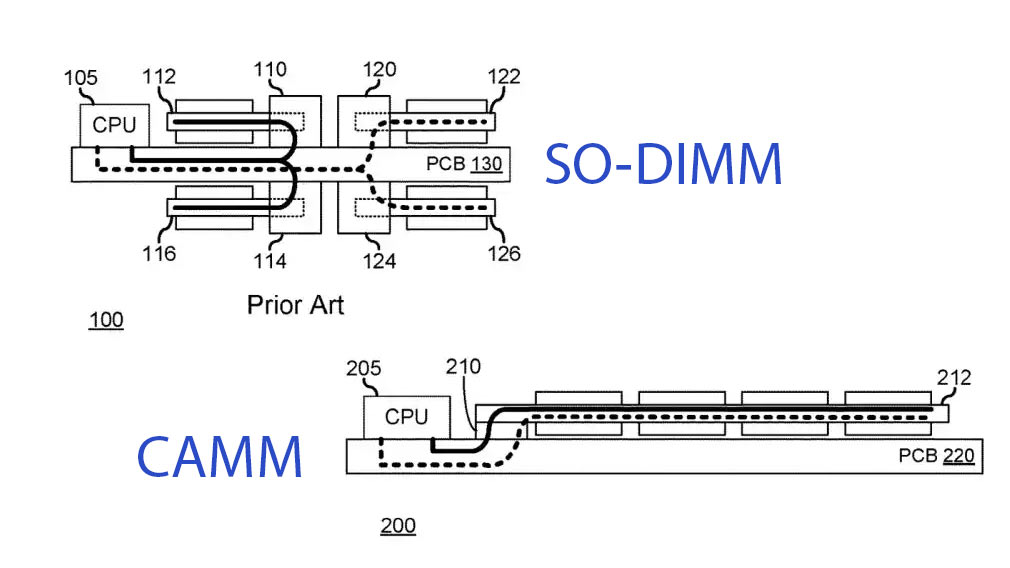So, farewell, SO-DIMM. After a quarter century of service in laptops, all-in-ones and other compact designs, it looks like the end of the road for SO-DIMM is in sight. JEDEC committee member and Dell Senior Distinguished Engineer, Tom Schnell, told PC World that the new ‘CAMM Common Spec’ will be the next RAM standard for laptops. There already seems to have been a lot of progress in the background, with the v0.5 spec already approved by 20 or so companies in the task group, and JEDEC expected to finalize the v1.0 spec in the second half of this year.
If CAMM sounds familiar, it might be because Dell’s Precision 7670 laptop arrived with DDR5 memory on one of these packages last year. As we mentioned at the time, CAMM can slim down laptops, and a few grams in weight. It also might help ramp up laptop memory loadouts, with Dell advertising the Precision 7670 with CAMM options up to 128GB.
The new information from PC World editor Gordon Ung’s chat with Tom Schnell helps us weigh up some of the pros and cons of CAMM, and point to some ways it has progressed from Dell’s pre-JEDEC-approved spec. Apparently, as well as improved density (more RAM capacity in a smaller space), CAMM is amenable to “scaling to ever higher clock speeds.” Specifically, the new information indicates that the DDR5-6400 ‘brick wall’ for SO-DIMMs will be shrugged off by CAMMs.

When CAMM reaches devices, there are a couple of tech advances which could help spur its adoption. We mentioned the faster DDR5 speeds above, but it is thought that CAMM could really take off when DDR6 arrives. Another appealing variation might be for adding LPDDR(6) memory to laptops. Traditionally LPDDR memory is soldered, so the new spring contact fitting modules might mean much better upgradability for the thinnest and lightest devices which tend to use LPDDR memory.
With the JEDEC CAMM v1.0 spec expected to be finalized in H2 2023, devices supporting this new memory standard are expected to debut in 2024. At the present time the build cost of CAMM is somewhat higher than SO-DIMM, so the first devices featuring this memory will probably be premium laptop designs.